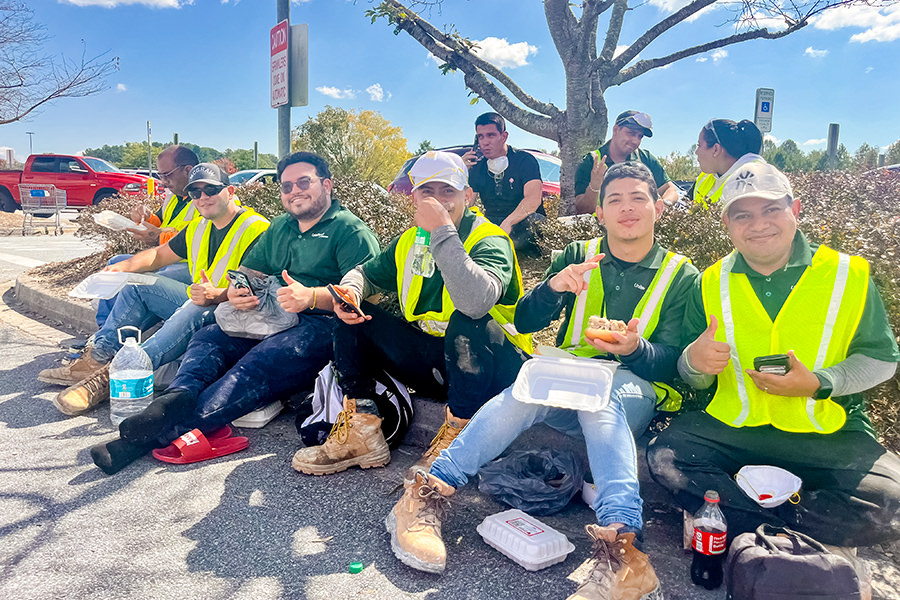
“Hurricane Helene Highlights the Need for Preparedness in the Glass Art Community”

## The Interconnected World of Studio Glass, Mining, and Geology: A Case Study of Spruce Pine, NC
Spruce Pine, North Carolina, may be a small town in the Appalachian Mountains, but its global significance in the realms of art, industry, and science makes it a cornerstone for many interconnected worlds. Its vital role in supplying minerals that fuel industries as diverse as studio glassblowing and semiconductor production shines light on the deep relationship between art, geology, and even climate. This article delves into Spruce Pine’s key role in this network, how a hurricane disrupted the entire supply chain, and how this incident points to broader issues related to our entwined existence with the geological world.
### Spruce Pine: Home to the World’s Purest Quartz
Known as the Spruce Pine Mining District, this 12-by-25-mile (~19.3-by-40.2-km) region is world-renowned for its remarkably pure quartz, feldspar, and mica. These minerals are integral to both artistic and technological endeavors. Quartz from Spruce Pine is essential for semiconductor production around the world and is also fundamental to the creation of modern digital devices, including smartphones, computers, and even telescopes. For the art world, feldspar and quartz are key ingredients in glassmaking, and the Spruce Pine Batch Company, since 1986, has provided glass batch — a mix of dry minerals destined to be melted in furnaces — to glassblowing studios across the country.
Spruce Pine’s geological significance reaches back into deep geological time. The availability of minerals in this region is a result of millions of years of geological processes, and today these materials fuel industries on a global scale. Artists working with glass and those developing crucial technologies rely on the same finite natural resources. Their work is an ongoing testament to the entanglement of human creativity with the subterranean riches of the Earth.
### An Artisan’s Resource: Spruce Pine Batch Company
One of the key suppliers for the studio glass movement, **Spruce Pine Batch Company**, has been providing raw material — glass batch — to glass artists for decades. The company supplies the mineral cocktail that glassblowers melt and shape into expressive works of art. The minerals that make up this batch come from the nearby feldspar and quartz mines, further binding human art and industrial processes with the geological forces that shaped the landscape of northwestern North Carolina.
This blend of artistry and mining was evident in the American Studio Glass movement, which began to take root in the 1960s. Harvey K. Littleton, considered the father of the movement and instrumental in developing Spruce Pine Batch, moved glassmaking out of factories and into the hands of individual artists. However, this shift in focus towards personal artistry didn’t sever the deep-rooted relationship between studio glass and mineral extraction. Even today, the autonomous studio glass artist relies on mining companies that locate, process, and distribute the essential materials for glass production.
### Hurricanes and Interrupted Supplies
This symbiotic relationship between art and nature was tested by **Hurricane Helene**, which struck the area in September 2023. The hurricane dumped over 24 inches (~62 cm) of rain in a single day, leading to landslides, damaged highways, and the interruption of mining and batch company operations. While Spruce Pine Batch succeeded in restarting production after a month, it revealed vulnerabilities both in terms of supply chain disruptions and the precarious role that local weather can play in global industries.
One example of how ingrained these materials are in both artistic and industrial worlds is **Tom Littleton**, the son of Harvey K. Littleton and current owner of Spruce Pine Batch. He revealed the challenges that the company faced in sourcing local feldspar after the hurricane, specifically because the roads, compromised by the hurricane, became a logistical nightmare. Though silica supply wasn’t as heavily impacted, feldspar had to be sourced locally, and getting the material to the batch company proved difficult.
In the words of a local miner, a “good day” is marked by a smooth delivery route free of hazards. The hurricane’s disruption turned roads into barriers, further highlighting the vulnerabilities in the intersection of geology, human infrastructure, and industrial art supply chains.
### Beyond Art: Semiconductors and High-Purity Quartz
Perhaps more surprising is Spruce Pine’s deep connection to the high-tech world of **semiconductor production**. Companies like **Silbeco** and **Quartz Corporation**, which operate in the region, extract some of the purest quartz in the world. This quartz is used to fabricate high-end semiconductors — vital components of modern electronics and computers.
One of the most remarkable uses of Spruce Pine quartz was its incorporation into the massive **Hale Telescope** at the **Corning Glass Works** (now **Corning Incorporated**), which was pivotal in the astronomical exploration of the early 20th century. These moments, where the minerals of the